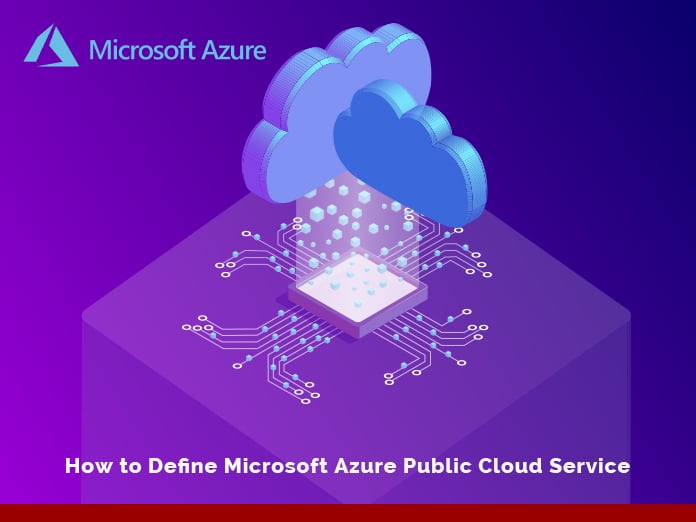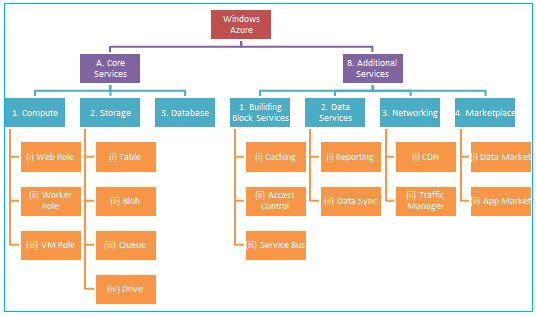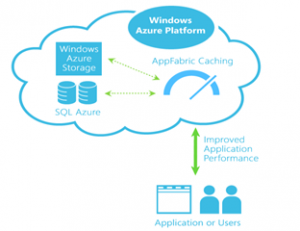In today’s blog, we will discuss Microsoft technology, in particular, the Microsoft Azure.
Jump to Section
Introduction
Have you ever heard the term “Microsoft Azure” and want to know what is inside it?
Let us define the purpose and the meaning of Microsoft Azure. Microsoft Azure is an application cloud computing of various cloud services. Hence helps to meet business challenges inside an organization. It is also known as Windows Azure.
There are several services users can pick; for instance, they can choose to develop and scale new applications from these services, or run existing applications, in the public cloud using your favorite tools and frameworks.
Microsoft created cloud services to deploy the services like, for building, testing, deploying, and managing applications and services through Microsoft-managed data centers.
What Is the Structure of Microsoft Azure?
Microsoft has categorized the Windows Azure Platform into three main components. Follow as Windows Azure, SQL Azure, and Windows Azure AppFabric.
1. Windows Azure

As you know, the Azure window is that part of the Azure platform which runs the applications and also stores the data. Wherefore Windows Azure contains five services.
a. Compute
b. Storage
c. Virtual Network
d. CDN
e. Fabric Controller
2. SQL Azure

To explain, SQL Database is the relational storage service Azure provides to store the relational data in the cloud. Similarly, it is like an SQL server database on the cloud. Note that SQL Database is available as a service on the Azure platform. Similarly, SQL Database contains all common features of the SQL server, such as tables, primary keys, stored procedures and functions, user-defined functions. Not only that, but it also manages transactions and concurrency. The important point here is applications can access SQL databases using different data access technologies such as EF and ADO.NET and WCF Data Services (just like SQL server).
3. Windows Azure AppFabric
Among all components, AppFabric is one of the major components of the Azure platform. Also, the AppFabric resides on top of the operating system and is a set of services. AppFabric mainly contains
a. Service Bus
b. Access Control Service
How Does Azure Work?
Azure provides services, uses the solutions, including infrastructure as a Service (IaaS), Platform as a Service (PaaS), and Software as a Service (SaaS).
Consequently, Azure takes the virtualization technology and rethinks it on a massive scale in Microsoft data centers around the world.
Azure is an immense collection of servers and network hardware, along with a complex set of distributed applications that plan or organize the configuration elements, the virtualized hardware functionality, and the software of these servers. And it’s this orchestration that makes Azure so efficient: users are now not responsible for maintaining and upgrading the hardware, because, in the background, Azure takes care of everything.
What Can Microsoft Azure Do?
Microsoft continues updating a growing directory of Azure services, with more services being added all the time. All the elements necessary to build a virtual network and deliver services or applications to the audience, for example:
Virtual Machines
In particular, Selecting templates from the marketplace or the custom machine images, Azure creates Microsoft or Linux virtual machines (VMs) in just minutes. These cloud-based VMs will service your apps. Azure VMs services as if they resided in your own data center.
SQL Databases
In detail, Azure helps to manage SQL relational databases, from one to an unlimited number, as a service. Therefore, this saves you overhead running costs and expenses on hardware, software, and the need for internal expertise.
Azure Active Directory Domain Services
Like Windows Active Directory, Azure Active Directory Domain Services built on the same proven technology, this service for Azure lets you remotely manage group policy, authentication, and everything else. Therefore, this makes the moving and existing security structure partially or totally to the cloud as easy as a few clicks.
Application Services
Above all, with Azure, it’s easier than ever to create and globally deploy applications that are compatible with all the popular web and portable platforms. As a result, Reliable, scalable cloud access lets you respond quickly to your business’s ebb and flow, saving time and money. After that, with the introduction of Azure WebApps to the Azure Marketplace, it is easier than ever to manage production, testing, and deployment of web applications that scale as quickly as your business. With the result that Prebuilt APIs for popular cloud services like Office 365, Salesforce, and more greatly accelerate development.
Visual Studio Team Services
Again, an add-on service available under Azure, Visual Studio team services, offers a complete application lifecycle management (ALM) solution in the Microsoft cloud. Therefore, Developers can share and track code changes, perform load testing, and deliver applications to production while collaborating in Azure from all over the world. In brief, Visual Studio team services simplify development and delivery for large companies or new ones, building a service portfolio.
Storage
Microsoft’s global infrastructure is reliable to provide safe, highly accessible data storage. As a result of massive scalability and an intelligent pricing structure that lets you store infrequently accessed data at huge savings, building a safe and cost-effective storage plan is simple in Microsoft Azure.
Conclusion
In the Windows Azure platform, Microsoft presents the range of options to enumerate the
varieties of needs. In conclusion, Cloud computing is for developers, taking advantage of cloud platforms.
Also, check out our data analytics services for improving your business. We assure our clients the best quality of work with the utmost satisfaction. To know more, visit Loginworks Softwares.
We hope you enjoyed this post; if you could help spread it by emailing it to a friend, or posting it on Twitter or Facebook, we would be very grateful. Thank you!
- Business Intelligence Vs Data Analytics: What’s the Difference? - December 10, 2020
- Effective Ways Data Analytics Helps Improve Business Growth - July 28, 2020
- How the Automotive Industry is Benefitting From Web Scraping - July 23, 2020




